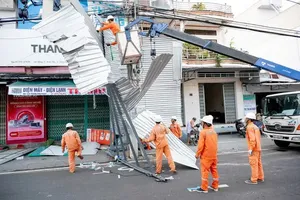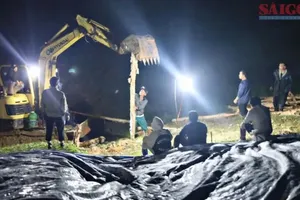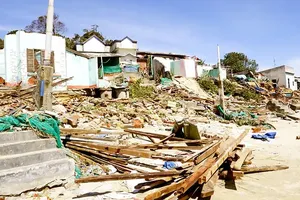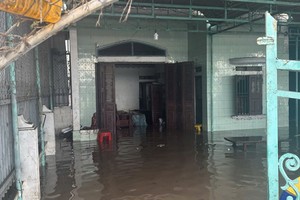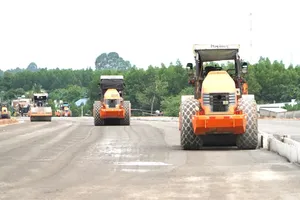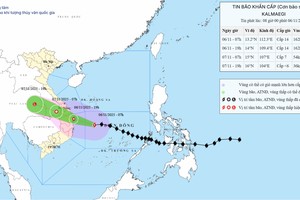
Vice Director Hoang Duc Cuong of the National Meteorological and Hydrological Administration stated that El Nino and La Nina are the warm and cool phases of the El Nino–Southern Oscillation (ENSO). ENSO will continue until the end of August and may transition to a La Niña state from September to November with a probability of 60 percent to 70 percent. The ocean-atmosphere system is rapidly shifting from warm to cold.
This will be an unfavorable factor that could cause adverse weather effects in many parts of the world, including Vietnam. In the eastern Pacific region, there will be less rain and drought while in the western Pacific region (including Vietnam), there will be more rainfall than usual. Storms and tropical depressions are likely to appear frequently in the East Sea, concentrated in a short period and coinciding with the peak rainy season in various regions of Vietnam, leading to a higher risk of severe flooding.”
The ENSO phenomenon, which encompasses both El Nino and La Nina, is in a neutral phase and is expected to remain so until around late August. There is a 60-70 percent probability that it will transition to a La Nina state from September to November. This rapid shift from warm to cold ocean-atmosphere conditions could lead to adverse weather patterns worldwide, including Vietnam.
Specifically, the Eastern Pacific is likely to experience reduced rainfall and drought conditions while the Western Pacific (including Vietnam) is anticipated to receive above-average rainfall. There is a higher probability of typhoons and tropical depressions forming in the South China Sea, with these events concentrated within a short period and coinciding with the peak of the rainy season in various regions of Vietnam. This increased frequency of storms could exacerbate the risk of severe flooding.
Since early 2024, the National Center for Hydro-Meteorological Forecasting has predicted an early end to El Nino, a rapid transition to a neutral phase, and the onset of La Nina by the end of the year. The center has issued long-term forecasts on the ENSO phenomenon to government agencies and local authorities to facilitate early preparedness. Ahead of potential disasters such as typhoons, tropical depressions, heavy rainfall, and widespread flooding or drought, the center proactively provides forecasts to the National Steering Committee for Disaster Prevention.
To enhance the accuracy of forecasts, the National Center for Hydro-Meteorological Forecasting has instructed its units to conduct objective assessments of heavy rainfall forecasting technology with various forecast lead times, with a focus on improving 2-3-day forecasts. Additionally, the center is reviewing its 2-3-day forecast and warning procedures, emphasizing coordination among forecasting units and providing more detailed bulletins. Efforts are also being made to strengthen monitoring, forecasting, and early warning systems for each potential disaster event.
According to the forecast agency's warning, as the ENSO phenomenon shifts to the La Nina phase, the number of typhoons and tropical depressions in the South China Sea could reach 11-13, with 5-7 making landfall, concentrated in the latter half of the rainy season. Flooding on rivers from the Central Province of Quang Binh to the South-Central Province of Khanh Hoa and in northern regions could reach levels 2-3. Moreover, there is a risk of urban flooding due to localized heavy rain; and landslides and flash floods may continue.

Director Pham Duc Luan of the Department of Dyke Management and Flood, and Storm Control (DDMFSC) under the Ministry of Agriculture and Rural Development said that since May, the National Steering Committee for Natural Disaster Prevention and Control has organized a conference to implement the tasks for natural disaster prevention in 2024. The committee outlined several solutions and tasks, including strengthening inspections, and assessments to identify key areas for heavy rain and floods as well as prepare for incidents for the safety of dikes, reservoirs, and disaster prevention structures.
Moreover, the committee has developed plans for drills to ensure the safety of dikes and reservoirs in large flood scenarios, civil defense drills, incident response, rescue operations; and drills to ensure the safety of boats during storms.
With the forecast of severe rain and flooding in the coming time, the safety of dikes is a very important issue. The Ministry of Agriculture and Rural Development has requested localities to strictly implement patrol and guard duties, protect dikes during floods, and proactively deploy measures to ensure dike safety and respond to rain and floods.
Recently, continuous rain and heavy rainfall have occurred in many places in the North, causing large hydropower reservoirs such as Son La, Hoa Binh, Tuyen Quang, and Thac Ba to open their spillways according to the inter-reservoir operation process in the Red River basin to ensure the safety of the structures and downstream areas.
To avoid being caught off guard by natural disasters, especially with increasingly extreme and unusual rain and flood situations, and to overcome the disadvantages of terrain and the impacts of economic and social development needs, proactive disaster prevention is essential to minimize damage.

